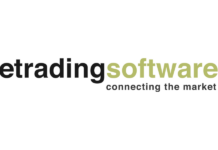Like illiquid fixed income instruments, illiquid fixed income markets are not standardized, with each on their own unique path toward market development.
Municipal bonds and leveraged loans were discussed in that context Tuesday afternoon at the Fixed Income Leaders Summit in Washington, DC.

The size of the muni market is estimated at $4.2 trillion, and is about 18% electronically traded, up from 6% in 2015, according to Bob Fink, Americas Buy-Side Relationship Director at Coalition Greenwich.
But whereas US government and investment grade corporate bonds have increased to 56% and 48% electronic trading respectively, largely on technological innovation, the muni market isn’t able to follow that roadmap. “If automation was the shortfall, we could solve it. But it goes beyond that,” Fink said.
Citi exited municipal bonds in 2024, other big banks don’t prioritize munis, and mid-market firms don’t have the budget to build out electronic trading beyond just deploying some trading algos. Additionally, the muni space is regional and highly fragmented, and an inefficient primary market presents another hurdle.
Panelists said muni bond market participants should not expect electronic trading to boost the price efficiency of muni bonds anytime soon, rather there needs to be innovation within market silos and flexibility and open-mindedness to other ways to move the market forward.
The loan panel covered the electronification of the loan market, with one panelist noting that a recent trade that took just two hours would have taken a day and a half one year ago. Banks are reluctant to move to electronic trading, and inefficient settlement and a lack of standardization of trading protocols are hurdles, but there is meaningful market development happening.

Neal Rayner, Head of US Fixed Income Trading at Janus Henderson, said a more electronic loan market will boost transparency and bring in retail market participants, which will end up boosting liquidity for all, including any banks and issuers who may have reservations.
There’s a “degree of lethargy” toward change on the part of some loan market participants now, Rayner said, but traders will eventually gravitate to the liquidity of an electronic marketplace.
©Markets Media Europe 2025












